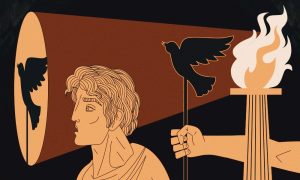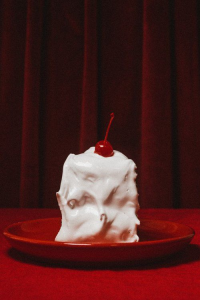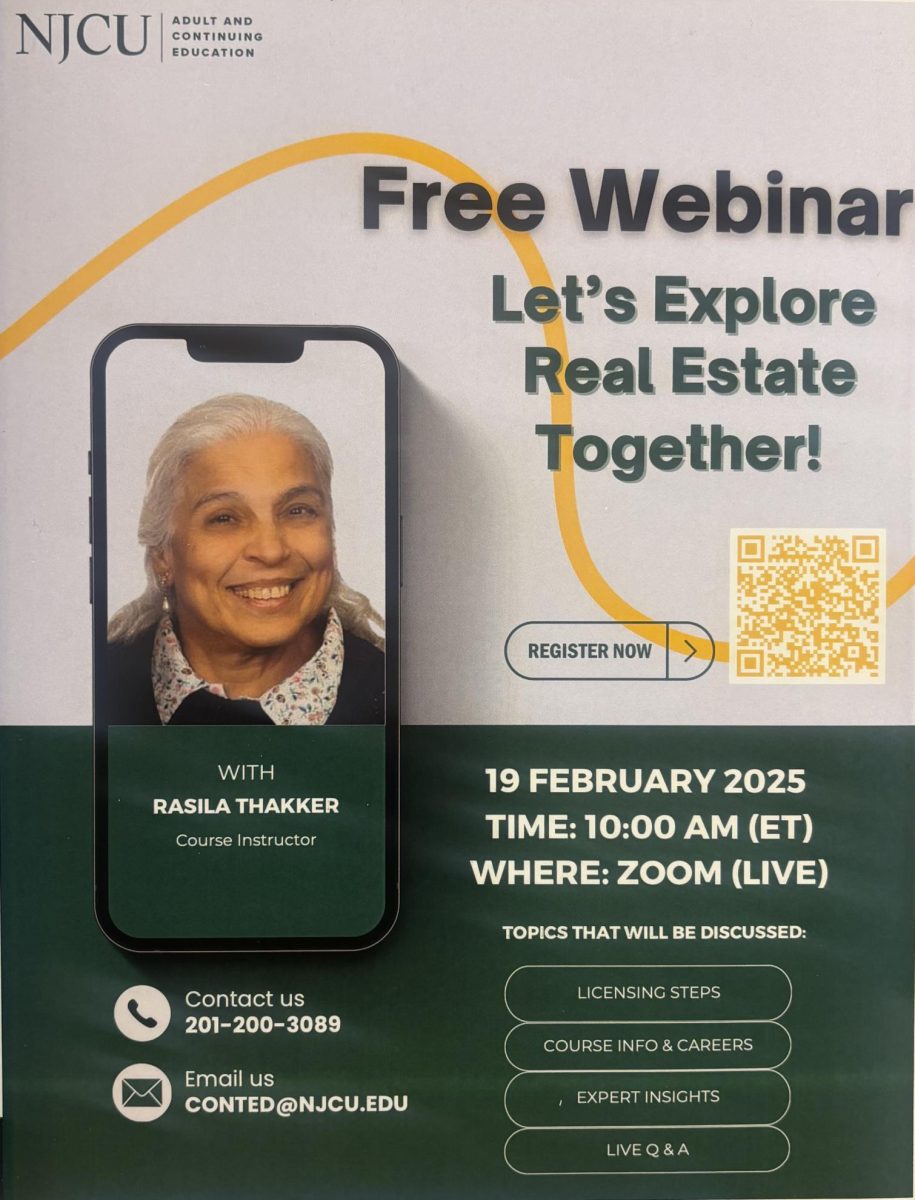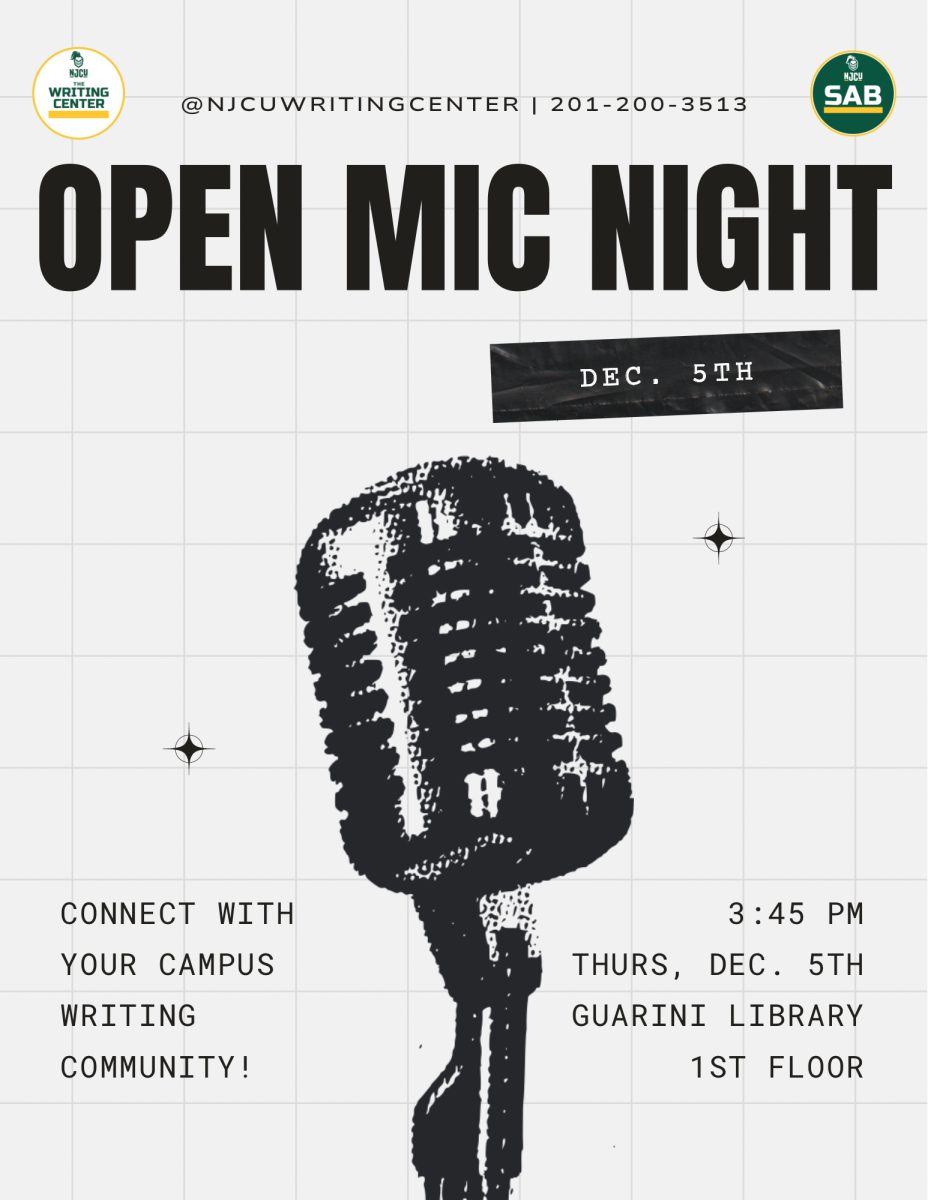Lights
June 8, 2016
In the still night, on a damp, dark street branches rustle against a cold dilapidated building. Irreverently, the tree refuses to bow to the silhouette of towers twinkling in the night. Its trunk, branches, leaves, refuse to give to this cold night or seasons calling. Its roots too invested in the soil. Still, the tree, unexpectedly flourishes. While the leaves battle the whistling of the wind the inevitable fall occurs. Spiraling into the brisk, cool air, the leaf loops into circles. First enclosing the crown of the tree. As if waving goodbye, the leaf weaves through the air, and softly grazes the shoulder of the building, a caress similar to that of lovers giving one last embrace; lingering. Then, off it flew through the dark neighborhood. Remembering the Christmas carolers who once filled the streets on the Eve. Remembering the children and families that would gather at the adjacent house, once doted upon as “The house with the most Christmas decorations in the city.”
This year, instead though, the house lulled in the dark and gloom of the night, almost a shadow to the city. But it mostly remembered the lights, the Christmas lights that once adorned the light-poles, and fixtures, laced the trees planted in pavement, and clothed the leaf’s old home. They were over there, the lights. Nostalgically, the leaf raced to the lights that jumped through the air, captivated and yearning once more for its warmth. But they seemed very far. “How could that?” thought the leaf. “The city appeared so small.”
As the leaf danced through the night, mesmerized by the colors, it got closer, closer to the source of its sentiments when an outpour of emotion ripped through its veins, a pain so sharp, not even its blades offered protection. Yet, it soon realized that the feeling was not pain but was betrayal. In that moment, it realized it was betraying the covenant. That is, the covenant of ‘the Hill,’ which the tree firmly rested. And that its yearning read, in fact, as moral ambivalence. A traitor, it was. It realized its desire to be liberated from the rich soil of ‘the Hill’ and the tree that sustained the city for the newfangled glittering, was wrong.
The leaf slowed its pace in confusion and for the first time in its journey began to look around. Slowly it glided down the block closing in on the nearest street sign. Martin Luther King Blvd it read. As it slothfully continued its journey it saw empty cans and bottles fill the street. No longer the empty candy wrappers that were passed to children by any store during the holiday season. The occasional car passed offering light. Heirs a store that the neighborhood teens frequented was now abandoned. It had been looted during hurricane Sandy. The owners who contested quite strongly to keep the store open, were finally defeated after being looted again. There stood a relatively new McDonalds. Marking progress I suppose. Not so long ago though just up the block on Orient Avenue there is a soul food restaurant—smothered chicken and gravy, candied yams, collard greens, of course baked macaroni and cheese, oxtails, and corn bread. Real food. That was traded for a double cheeseburger with fries.
Almost somberly now it continued, passing Extra the local supermarket. Passing the light rail, which just stopped, spilling teenagers onto the platform and into the streets. Most coming from the movie theatre. Navigating the darkness with the light from their cell phone screens. The leaf moved on. Passing Forrest Avenue, where a lively bodega once stood. Now closed from business. Not far across the street stands the liquor store that’s always open, was now closed. And the usual men who harass girls and the druggies and the sots who haggle passer-byers for money were not there. The streets were eerily empty. Passing the old shopping center, where there is a KFC, a hair store, a fish market and a Laundromat. The black truck that’s usually decorated with hats, socks, shirts, belts, and any and everything else the vendor could sell, was not there today. Nor were the usual winos who conjugated on the other corner of Clinton Avenue. The leaf passed the Fourth Police Precent on Communipaw Avenue and Monticello Avenue, which was uncharacteristically dark and empty. It passed the many churches that flooded that street. It passed the old store that sold used furniture and the youth group center. All silent. People less. Lifeless. Swiftly, the wind gushed, offering the leaf momentum. Making its ways all the way to__ . It looked up again to find an old train track, antiquated, occasionally allowing the work train- to drive through. There it was in beautiful graffiti (if it could be called graffiti once a liberating art-form, unique to the urban, both resisting and challenging authority, now controlled by profit) it read: Welcome to Downtown Jersey City. As if the city had just begun. As if the other lustrous neighborhoods did not exist. As if the rough terrain of the urban; the interrupted tree lined pavements; car jammed and uniquely cultural neighborhoods were not enough. And there they were, at the new found city line. The leaf stared, with stalk stillness. As if desire or despair had connected it to them. There they were. There were the lights.
Just inside the walls of the ivory towers, the woman on the opposite end of the telephone explains the new state ordinance. Pamela Johnson, founder of The Jersey City Anti-Violence Coalition Movement, shares this information.
“They didn’t request Christmas decorations,” she said staring blankly.
Every year, the day after Thanksgiving, Christmas decorations are stringed throughout Jersey City, an opportunity for both the developed and underdeveloped parts of the city to sparkle with admiration.
Yet, November 27th 2015 came and passed and still many parts of Wards A and F went without Christmas decoration.
The reason, “business owners did not request Christmas decorations, so they didn’t receive any,” explained Johnson.
Many whispered concerns on this social injustice, as some called it.
Earl Morgan, reporter for the Jersey Journal and Social Activist, Yvonne Bolcer, among the few who explained the culprit as gentrification.
Associate Professor of Sociology, Max Herman, attributes uneven development, “to be a factor in the problem.”
“[This] sends a negative message to the people in the city—when some neighborhoods receive the bulk of resources and other neighborhoods are not receiving any resources aside from police,” Herman says.
Nonetheless, downtown Jersey City glowed with blue and purple lights, illuminating the richly decorated part of the city’s streets.











